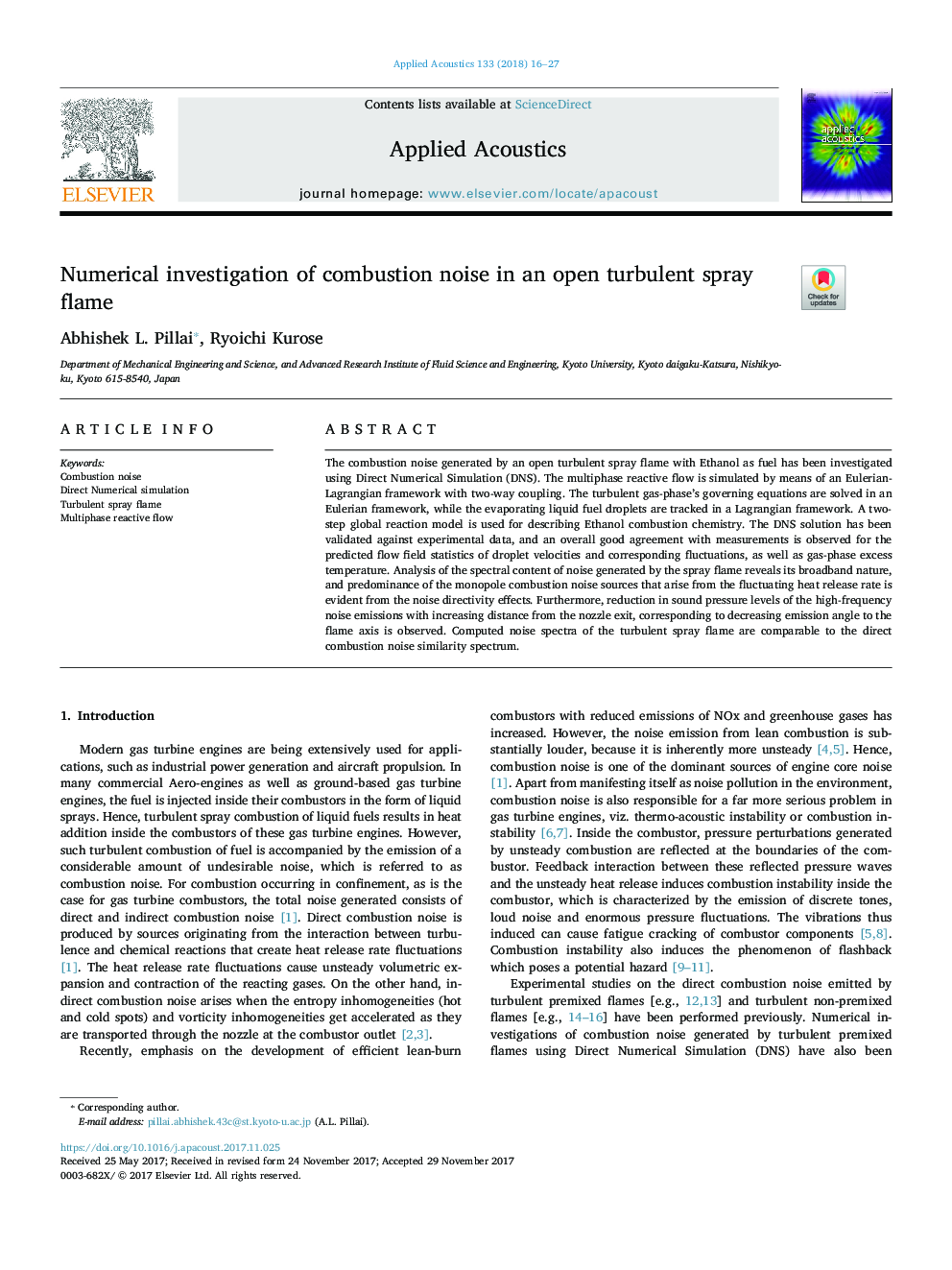| Article ID | Journal | Published Year | Pages | File Type |
|---|---|---|---|---|
| 7152301 | Applied Acoustics | 2018 | 12 Pages |
Abstract
The combustion noise generated by an open turbulent spray flame with Ethanol as fuel has been investigated using Direct Numerical Simulation (DNS). The multiphase reactive flow is simulated by means of an Eulerian-Lagrangian framework with two-way coupling. The turbulent gas-phase's governing equations are solved in an Eulerian framework, while the evaporating liquid fuel droplets are tracked in a Lagrangian framework. A two-step global reaction model is used for describing Ethanol combustion chemistry. The DNS solution has been validated against experimental data, and an overall good agreement with measurements is observed for the predicted flow field statistics of droplet velocities and corresponding fluctuations, as well as gas-phase excess temperature. Analysis of the spectral content of noise generated by the spray flame reveals its broadband nature, and predominance of the monopole combustion noise sources that arise from the fluctuating heat release rate is evident from the noise directivity effects. Furthermore, reduction in sound pressure levels of the high-frequency noise emissions with increasing distance from the nozzle exit, corresponding to decreasing emission angle to the flame axis is observed. Computed noise spectra of the turbulent spray flame are comparable to the direct combustion noise similarity spectrum.
Related Topics
Physical Sciences and Engineering
Engineering
Mechanical Engineering
Authors
Abhishek L. Pillai, Ryoichi Kurose,
